For years, prosthetic therapy was something people mostly did in hospitals or rehab centers. It involved routines set by professionals, regular visits to physiotherapists, and often a long commute. But today, something new is changing the way people recover and adapt after limb loss. Something that brings therapy right into the living room—and makes it more engaging, more consistent, and in many cases, more effective.
That something is gamification.
Gamified prosthetic therapy uses digital tools, motion sensors, and interactive feedback to turn physical rehab into a focused, motivating experience that feels less like work and more like play. It combines what we know about movement and healing with what we’ve learned from video games and interactive technology. The result? Therapy that feels exciting, purposeful, and surprisingly fun.
At Robobionics, we’ve always believed recovery should empower people—not wear them down. With gamified rehab, users are reclaiming their bodies, their confidence, and their daily lives on their own terms. And they’re doing it from the comfort of home.

Why the Shift to Home-Based Therapy Matters More Than Ever
The Comfort of Home Changes Everything
There’s something deeply powerful about healing in your own space. After limb loss, life becomes uncertain. Even stepping out of the house can feel like a major challenge. Hospitals and clinics, while necessary, can also feel sterile, rushed, or intimidating. Many people—especially older users—feel anxious or self-conscious when performing rehab in front of others. That emotional discomfort can slow down recovery.
Home-based therapy changes that entirely. When you’re in your own room, wearing your own clothes, surrounded by familiar sights and sounds, your mind relaxes. You’re not distracted by other patients or time pressure. You can go at your own pace. You’re more open to trying, failing, and trying again. And when therapy becomes something you choose to do in your own time—not something you’re forced to attend—you’re far more likely to stay consistent.
Gamified rehab builds on this freedom. It turns therapy into a task you look forward to rather than a burden. Whether it’s a ten-minute challenge after breakfast or a guided session in the evening, users start treating therapy like a daily habit—just like brushing teeth or walking the dog. It becomes part of life, not apart from it.
Technology Is Finally Ready for the Living Room
A few years ago, home-based rehab technology was still clunky, expensive, and hard to set up. Many systems required special hardware, trained supervision, or a constant internet connection. But today, things have changed. Devices have become smaller. Sensors are smarter. Interfaces are easier to use. Even basic smartphones or tablets can now run interactive rehab programs that are as effective as in-clinic tools.
Some platforms use cameras to track movement. Others use wearable sensors that attach directly to the prosthetic or the limb. These tools provide instant feedback on range of motion, speed, balance, and control. Users see their performance in real time, which helps them understand how their body is changing with each session. And more importantly, they don’t need anyone else in the room to do it.
This kind of independence is a game changer—especially for users in smaller towns or remote areas of India where regular access to rehab centers is limited. Now, with just a screen and a bit of space, they can follow a personalized rehab plan at home. And as confidence grows, they often push themselves further than they would in a clinical setting.
Engagement Is the Missing Link in Traditional Rehab
Let’s be honest—most traditional rehab routines are hard to stick to. The exercises are often repetitive, slow, and boring. You’re asked to do the same movement again and again, without much feedback, and with little variation. Over time, motivation fades. Sessions are skipped. Progress slows.
Gamified rehab fixes this by giving users a reason to come back every day. The reason isn’t fear of a missed appointment or pressure from a therapist—it’s curiosity. It’s challenge. It’s fun.
Think about what makes games so addictive. They give you goals. They reward small wins. They adjust difficulty as you improve. They show progress visually and immediately. These same principles are used in gamified therapy. The user might be playing a simple game that involves lifting their arm to “catch” stars on the screen. But behind the scenes, the game is improving shoulder control, joint awareness, and strength. And because the experience feels playful, the user stays focused—and returns the next day ready to beat their score.
This kind of engagement is more than entertainment. It creates a loop of motivation, effort, and reward. That loop is what drives real, lasting recovery.
Family Support Grows Stronger at Home
Another quiet strength of home-based gamified rehab is the way it brings families into the healing process. In clinics, therapy happens behind closed doors. At home, everyone can be part of it—even in small ways.
We’ve seen grandparents being cheered on by their grandchildren as they “level up” in a rehab game. Spouses helping with sensor setup or joining in the session for fun. Adult children tracking their parent’s progress through a mobile app and offering words of encouragement. These small moments build emotional bonds—and emotional support is one of the strongest predictors of rehab success.
When recovery is visible, when it’s celebrated daily, the person going through it feels seen. They feel less alone. And that sense of connection builds strength that no machine or software ever could.
Gamified therapy doesn’t isolate people—it includes them. It brings recovery into the heart of the home.
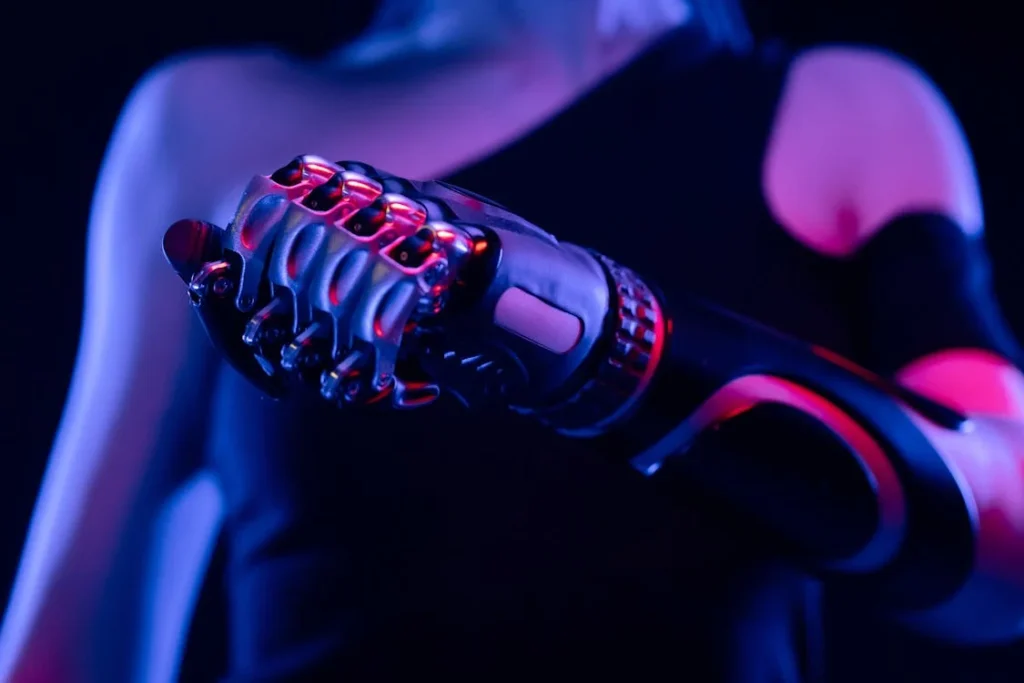
How Gamification Boosts Long-Term Results in Home-Based Rehab
Making Motivation Sustainable Through Small Daily Wins
One of the biggest challenges in any long-term therapy is staying motivated. The beginning of rehab is usually full of energy—users are determined, optimistic, and ready to work hard. But as the weeks go by, progress can slow down. Exercises start to feel repetitive. Results feel too far away. And when you don’t see or feel immediate improvement, it’s easy to lose interest.
Gamified rehab understands how motivation actually works. It doesn’t rely on willpower alone. Instead, it creates small moments of success that happen every day. These are called “micro-rewards.” Each time you complete a movement correctly, beat a score, or unlock a new level, your brain receives a small boost of satisfaction. That’s not just emotional—it’s chemical. Your brain releases dopamine, a natural feel-good signal, every time you achieve something meaningful.
The best part? These rewards aren’t tied to perfection. You don’t need to be the fastest or strongest. You just need to show up and try. The game recognizes effort, not just results. That’s what keeps users coming back day after day, even when progress is slow.
This steady motivation is what leads to real recovery. Not giant leaps, but quiet, consistent steps taken daily—each one building on the last.
How Adaptive Difficulty Creates the Perfect Challenge
If rehab is too easy, it gets boring. If it’s too hard, it becomes frustrating. Either way, users tend to disengage. That’s a problem in traditional rehab programs, where the pace is often fixed. Users are asked to repeat the same exercises over and over, even if they’ve outgrown them—or they’re pushed too quickly into difficult movements they’re not ready for.
Gamified rehab solves this with adaptive difficulty. The system watches your performance and adjusts automatically. If you’re improving quickly, the game offers tougher challenges. If you’re struggling, it gently eases up and gives you simpler tasks to rebuild confidence. This creates a “just right” zone of difficulty, where you feel challenged but not overwhelmed.
This tailored pacing helps users stay in what’s known as the flow state—a mental zone where focus is high, distractions fade, and time seems to pass quickly. It’s the same zone athletes talk about when they’re in peak performance. And it’s the same zone where healing happens fastest, because both the body and brain are completely engaged.
We’ve seen users at Robobionics make remarkable gains simply because the challenge matched their ability at the right time. No more plateaus. No more burnout. Just steady, satisfying progress.
Building New Habits That Outlast the Game
Any recovery plan, no matter how advanced, is only useful if people stick with it. And that’s where gamification works its quiet magic. It doesn’t just make rehab enjoyable—it helps users build a routine that lasts.
Games are designed to be habit-forming. They include reminders, daily challenges, streaks, and goal-setting features. These aren’t random—they’re based on behavioral science. Each element is designed to turn a short-term activity into a long-term routine. And when you apply that structure to home-based rehab, you get the same effect.
Users begin associating therapy with something rewarding. They create a rhythm—maybe it’s right after breakfast or before their evening tea. The screen lights up, the music starts, and the day’s session begins. And because the session is short, interactive, and rewarding, it doesn’t feel like a burden. It becomes a natural part of the day.
Eventually, even without the game, the body remembers what it learned. Movements feel smoother. Balance becomes easier. Confidence returns. The habits remain—even after the rehab platform is turned off.
Creating Measurable Progress That Feels Personal
One of the problems with traditional rehab is that progress often goes unnoticed. You might do the same exercise for weeks, but unless someone measures you with a stopwatch or tape, it’s hard to know if you’re improving. That makes it easy to feel stuck, even when you’re not.
Gamified therapy solves this by tracking everything in real time. Range of motion, reaction time, speed, balance, strength—each session creates data that shows exactly how far you’ve come. And because the results are shown visually—like progress bars, graphs, or scores—they’re easy to understand at a glance.
This creates a feeling of ownership. Users can say, “Last week I could only reach this far, but now I’m doing more.” That moment of recognition builds pride. It also creates motivation to push a little further. Even small improvements feel big when you can see them.
And for family members or healthcare professionals, this data is gold. It allows them to track progress, adjust care plans, and celebrate milestones with the user. No more guesswork. Just real results, shown clearly, shared with those who care.
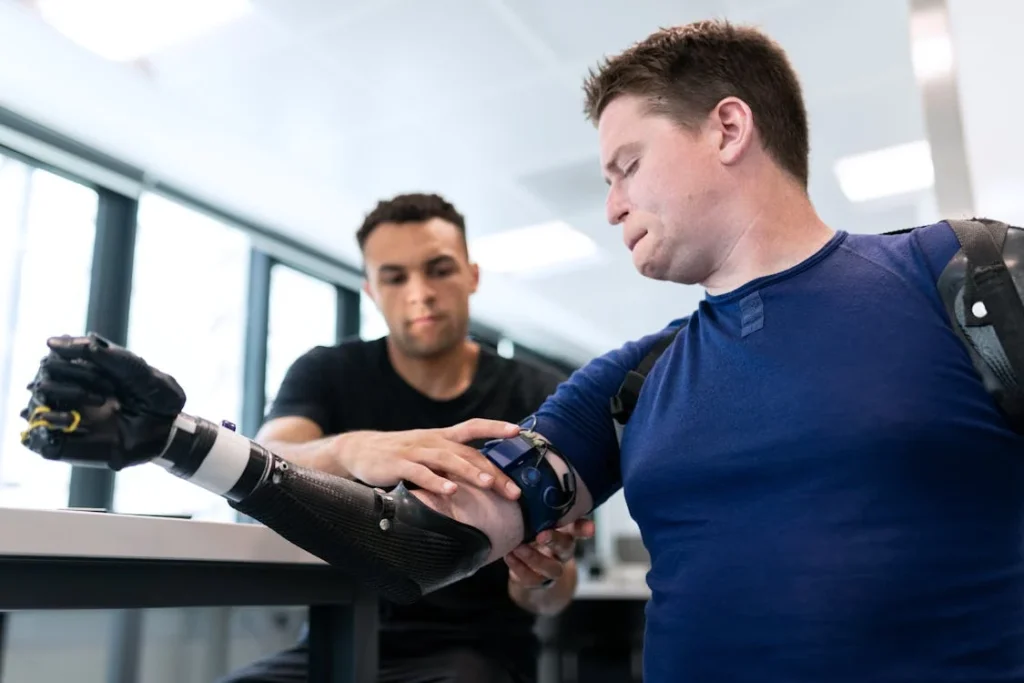
The Role of Gamified Rehab in Empowering Independent Living
Why Confidence, Not Just Strength, Defines Recovery
After limb loss, one of the biggest hurdles people face isn’t just physical—it’s emotional. Many users regain their strength faster than they regain their confidence. They may be able to walk or lift again, but they hesitate. They second-guess their movements. They feel unsure in unfamiliar environments, or nervous about being seen with a prosthetic. This lack of self-belief holds them back more than any physical limitation ever could.
Home-based gamified rehab addresses this quietly but powerfully. It doesn’t just train the body—it builds a sense of self-mastery. Every time a user completes a session, levels up, or moves more smoothly than the day before, something clicks inside. “I did that.” That small moment of success becomes the start of a much bigger shift—where users begin to believe in their ability to recover, adapt, and move forward without fear.
This confidence spills over into everyday life. Suddenly, stepping outside feels doable. Taking the stairs isn’t so daunting. Cooking a meal or opening a heavy door becomes less intimidating. That’s because gamified rehab doesn’t just teach you to move—it teaches you to trust your body again.
Reclaiming Routine Through At-Home Rituals
When someone experiences limb loss, their daily rhythm is often turned upside down. Things that were once automatic—getting dressed, bathing, cleaning, working—suddenly become complicated. It’s easy to feel disconnected from your old identity. And while clinic visits can help physically, they rarely help rebuild those lost daily rhythms.
Gamified therapy at home creates a new kind of structure. It gives users a reason to start the day with purpose. Whether it’s a morning routine of five targeted movements or a calming end-of-day balance challenge, these small rituals begin to rebuild the sense of “normal.”
More importantly, they happen in the user’s own space. That’s where real independence lives—not in hospital rooms, but in bedrooms, kitchens, and front yards. By training in the same environment where real-life challenges happen, users build strength and strategy that are immediately useful. They’re not just lifting their leg for a machine—they’re training to get up from a sofa, walk to the door, and step into the world with ease.
It’s therapy with context—and that’s what makes it powerful.
Making Adaptability Part of Everyday Life
Recovery is not a straight line. There are good days, and there are hard days. Some mornings the body feels strong, others it doesn’t. Some weeks progress is fast, and other weeks it feels like you’re standing still. Traditional rehab plans rarely make space for this kind of natural fluctuation. They follow a fixed schedule. And when users fall behind or miss a session, they often feel guilty—or worse, like they’ve failed.
Gamified therapy introduces something much more forgiving: adaptability. Most systems allow users to adjust the intensity of a session based on how they feel. Feeling strong? Go for a longer challenge. Feeling tired or sore? Choose a lighter game with gentler movements. The platform responds to the user—not the other way around.
This approach teaches something essential: flexibility is part of the process. You don’t have to be perfect to make progress. You just have to keep showing up, in whatever way you can. That mindset is a gift—not just for therapy, but for life.
We’ve seen users become more patient with themselves, more creative with their routines, and more willing to adjust rather than quit. And when users know they can shape their therapy to fit their lives, rather than shape their lives around therapy, something shifts. They begin to feel in control again.
Creating a Safe Space to Experiment and Grow
Many new prosthetic users feel like they’re constantly being watched—by therapists, by family, by society. That pressure can lead to hesitation and self-doubt. In some cases, it can even prevent people from pushing their limits, because they’re afraid to “fail” in front of others.
Home-based gamified rehab removes that pressure. It creates a private, safe space to explore what the body can do. It lets users try new things without fear of judgment. And because the system responds with encouragement—not criticism—it helps users feel brave enough to keep experimenting.
That’s where real learning happens. In those small, quiet moments when no one else is watching, and the user is simply practicing, trying, adjusting, and discovering what works for them. That’s not just therapy. That’s ownership.
And when someone owns their recovery, everything changes. They move from feeling like a patient to feeling like a person in progress—capable, evolving, and ready for what comes next.
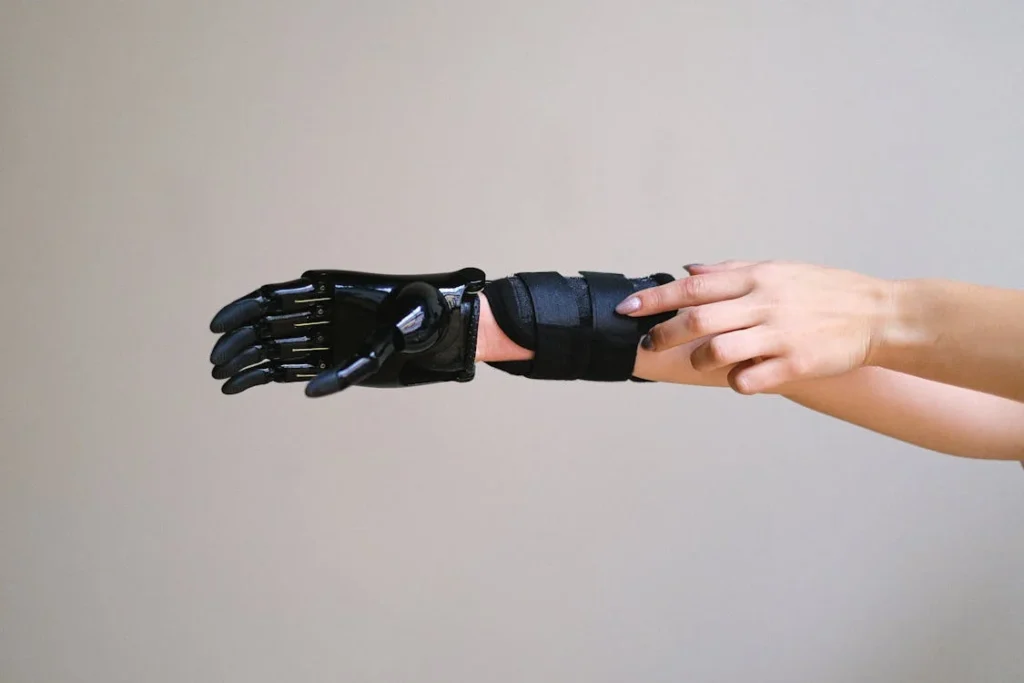
Why Gamified Therapy Is the Future of Prosthetic Rehabilitation in India
Solving the Access Problem in Rural and Small-Town Areas
India is a country full of resilience—but also full of uneven access to healthcare. In major cities, prosthetic users often have access to world-class rehab centers, trained therapists, and modern facilities. But outside these urban hubs, in small towns and rural regions, the story changes. Many users must travel long distances to reach a clinic. Some don’t have access to a trained physiotherapist nearby. Others can’t afford the travel, or simply aren’t mobile enough to make the trip.
This is where home-based gamified rehab becomes a game changer—not just for the user, but for India’s entire healthcare ecosystem.
All you need is a smartphone, tablet, or laptop. Some platforms run with simple motion tracking using the device’s camera. Others require a low-cost wearable sensor that can be delivered and set up at home. Once installed, the entire rehab plan runs digitally—no need for a physical therapist to be present every day.
This kind of setup is not only accessible, it’s scalable. Clinics and NGOs across the country are beginning to explore how digital rehab can reach communities that were once left out. At Robobionics, we’re actively working with partners to bring these solutions to Tier 2 and Tier 3 cities—ensuring that healing is no longer reserved for the privileged few.
Lowering the Long-Term Costs of Rehabilitation
Rehabilitation is a long journey. Even after a user gets their prosthetic fitted, the real work begins at home—learning to move naturally, strengthening muscles, improving balance. These steps take time, and when done in a traditional setting, they can be expensive. Session fees, travel costs, time off work—all of it adds up.
Gamified home rehab significantly reduces these costs.
Instead of needing 10 in-person sessions, a user might only need two or three to get started and then check in occasionally. The rest happens at home. The digital program adapts as the user improves, giving them fresh challenges and goals to meet. That means fewer clinic visits, less pressure on local therapists, and a more sustainable model for families.
This matters in a country where healthcare is often paid out of pocket. Families already facing medical expenses from surgery or trauma can now ease the burden of ongoing rehab—without compromising on results. In fact, in many cases, users improve faster at home because they’re more comfortable and more consistent.
Creating a Tech-Enabled Ecosystem of Care
India’s digital health space is booming—and gamified rehab fits perfectly into this larger transformation. With telehealth, remote diagnostics, and AI-driven platforms becoming more common, prosthetic therapy is now part of a connected ecosystem.
Imagine this: a user completes a rehab session at home. Their movement data is automatically shared with their clinician. The clinician reviews it, sees areas for improvement, and sends a message through the app with tips for the next session. The user feels guided, even though they’re miles away.
This isn’t science fiction—it’s already happening. And in the near future, that same data could be used to customize prosthetic design, detect early signs of fatigue or pain, or even offer personalized therapy playlists based on mood and energy levels. With India’s young tech-savvy population and increasing access to 4G and 5G networks, we’re uniquely positioned to lead the way in digital rehab innovation.
At Robobionics, we’re proud to be part of this shift—combining our years of prosthetic design expertise with smart technology that delivers not just products, but possibilities.
Empowering a New Generation of Self-Led Users
Traditionally, prosthetic users were expected to follow instructions passively. A doctor or therapist would tell them what to do, and they’d follow along. But today’s users want more. They want to understand their progress, set their own goals, and take control of their recovery.
Gamified rehab puts that power back in the user’s hands.
Instead of waiting for a therapist to lead the way, users can explore, challenge themselves, and measure their own improvement. They become active participants in their journey—not just patients, but partners in care. This mindset shift has far-reaching effects. It leads to better outcomes, stronger commitment, and a deeper sense of pride in every step of progress.
We’re already seeing this transformation across India—young users rebuilding careers after injury, elderly users rediscovering independence, and even children with congenital limb differences developing a positive relationship with movement thanks to playful therapy tools.
Gamified rehab is not just a trend. It’s the future of prosthetic recovery. It’s the bridge between high-quality care and real-life access. And it’s how we make recovery not just possible—but personal, powerful, and deeply human.
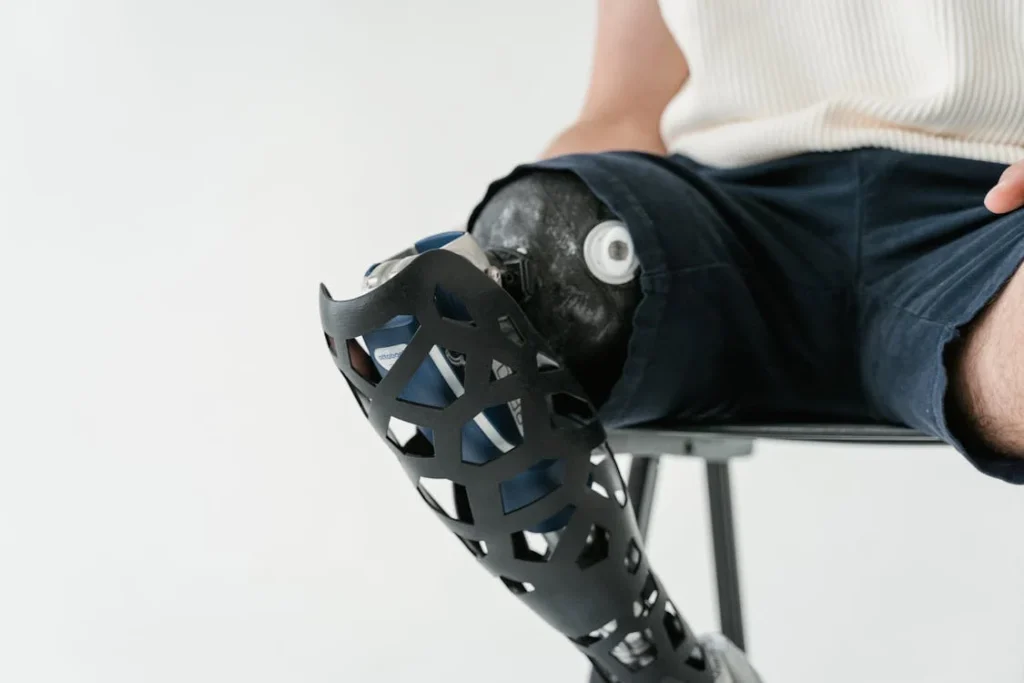
Emotional Wellness and Gamified Rehab: Healing the Mind Alongside the Body
Why Emotional Health Is Often Overlooked in Recovery
Rehabilitation is usually talked about in physical terms—how much strength you’ve gained, how many degrees of motion you’ve recovered, or how well you’re walking with your prosthetic. But beneath the surface, recovery also involves deep emotional work. For many users, limb loss brings grief, anxiety, frustration, and even shame. These feelings don’t always show up in the clinic—but they’re there, quietly affecting motivation, consistency, and hope.
At Robobionics, we’ve seen firsthand that emotional health and physical progress go hand in hand. If someone is feeling low, they’re less likely to engage with their therapy. If they feel overwhelmed or discouraged, even the best-designed rehab program can feel impossible. This is where gamified home-based therapy offers something truly unique—it doesn’t just move the body. It uplifts the spirit.
Gamified systems create an environment of encouragement, not pressure. They offer users a place to try, fail, and try again—without judgment. That’s a powerful psychological shift. It creates safety, autonomy, and joy at a time when many users feel vulnerable or uncertain.
How Play Reintroduces Joy into a Serious Journey
The idea of “playing a game” during rehab may sound frivolous to some—but in reality, play is a serious tool for healing. It brings laughter, surprise, and lightness into a space that is often heavy. And for users adjusting to life with a prosthetic, those small moments of joy matter deeply.
Gamified therapy allows users to explore their new body without fear of judgment or failure. When a mistake is made, the system doesn’t scold—it simply resets. When progress is achieved, it celebrates—even the smallest win. These reactions may seem simple, but they feed emotional resilience. They give users the permission to enjoy their progress, instead of always measuring it against a rigid medical standard.
Even the visual and sound design of these systems often contributes to emotional comfort. Bright colors, soothing tones, familiar imagery—these small elements reduce anxiety and create a space that feels welcoming. And because it happens at home, the experience is intimate. The user is free to react, smile, struggle, or succeed on their own terms.
Rebuilding Self-Identity Through Movement
Losing a limb changes how a person sees themselves. Some users report feeling like they’ve lost not just a part of their body, but a part of their identity. They may avoid mirrors, hide their prosthetic, or withdraw socially. These emotional patterns can become barriers to recovery—ones that no amount of physical training can solve on its own.
Gamified rehab offers a chance to rebuild that identity—slowly, safely, and meaningfully.
Each session is a reminder that the user is capable. That they can learn. That they can get better. As their avatar moves across the screen, so does their self-image. They start seeing themselves not as someone recovering, but as someone growing. This shift is subtle, but it’s life-changing.
We’ve spoken to users who’ve told us, “I felt like myself again,” after a breakthrough moment in a game. Not because they achieved a major goal—but because they felt in motion. That feeling—of moving forward, not being stuck—is one of the most healing emotions a person can experience.
Creating Emotional Consistency Through Routine
When someone is going through an emotional dip—whether from physical pain, social isolation, or sheer exhaustion—routine becomes an anchor. It doesn’t solve everything, but it creates something steady to hold onto.
Gamified home therapy becomes a daily emotional checkpoint. The familiar flow of logging in, hearing the startup sound, completing a few levels—it provides structure. It offers something the user can count on, even when the rest of life feels chaotic or uncertain.
And because the experience is interactive and rewarding, it often becomes a positive outlet for stress. Instead of turning to passive distractions, users engage their bodies and minds in a focused way. The result is not only better rehab outcomes—but a stronger, calmer emotional foundation.
Gamified rehab may start with the body—but where it truly shines is in its quiet, consistent support of the whole person.
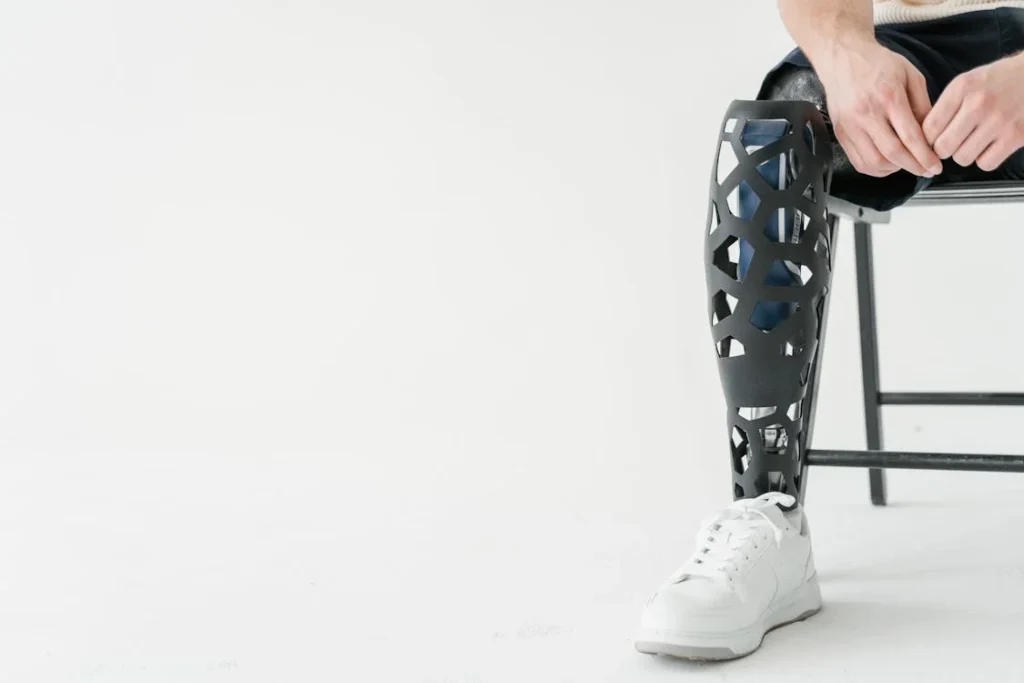
Data-Driven Insights: How Gamified Rehab Is Shaping the Next Generation of Prosthetics
Every Movement Tells a Story
Most people don’t realize this, but every time a user moves with a prosthetic—whether it’s a lift, a balance shift, or a reaction to a prompt—they’re creating valuable data. Gamified therapy platforms track that data in real time. And while it may just look like points, scores, or range-of-motion feedback on screen, underneath it lies a goldmine of insight.
This is not just helpful for tracking progress. It’s the beginning of a larger shift: prosthetics that adapt to you.
At Robobionics, we’re moving toward a future where the data from home-based therapy doesn’t end with the session. It becomes part of a feedback loop—one that allows prosthetic designers, engineers, and therapists to build smarter, more personalized solutions for each individual user.
From Therapy Data to Custom Device Tuning
In the past, prosthetic design was based on static measurements—limb length, socket fit, pressure points. Adjustments were made only during clinic visits, usually after discomfort or complications appeared. But with gamified rehab, we now have access to real-world movement patterns.
For example, if a user consistently struggles with wrist rotation in their home sessions, or their grip force timing is delayed during interactive games, that tells us something. It shows us how the prosthetic is performing under real conditions—not just in a test lab or during a brief fitting session.
Using this data, we can fine-tune device settings remotely. Some smart prosthetics even allow live software updates, meaning the device can evolve with the user. As they get stronger, faster, or more precise, their prosthetic can adapt accordingly.
This kind of responsive tuning wasn’t possible before. But now, gamified home therapy is becoming the gateway to truly dynamic prosthetic performance.
Enabling Predictive Support Through Behavioral Patterns
Over time, rehab data builds patterns. It shows us when a user tends to perform best (morning or evening), how often they complete sessions, which movements are improving, and where progress has stalled. This allows therapists and designers to be proactive rather than reactive.
Let’s say a user’s motion range has started declining slightly over two weeks. Maybe they’re avoiding certain actions. That’s a flag—not just for therapy, but for prosthetic adjustment, comfort evaluation, or even emotional check-ins. The system can suggest changes, notify a clinician, or recommend new exercises before the issue becomes serious.
This ability to anticipate challenges is huge—especially for users in remote areas or those without regular in-person checkups. It turns rehab platforms into early warning systems, helping maintain long-term comfort, safety, and efficiency.
Designing Future Prosthetics Based on Collective Rehab Intelligence
Beyond individual insights, gamified platforms offer something just as valuable on a larger scale: collective intelligence. As more users participate in home-based therapy, anonymized data starts to show global trends—what movements are hardest for people with below-elbow amputations, what games lead to faster grip control, or how bionic hand users respond to force-feedback environments.
This kind of aggregate data helps designers improve future devices for everyone. Instead of guessing what users need, we can know. We can prioritize features that have proven effective in real-world use. We can phase out design flaws that show up across many cases.
It’s a feedback loop where the user’s daily effort isn’t just personal progress—it’s a contribution to the future of prosthetic innovation.
Closing the Loop: From Rehab to Innovation and Back Again
In traditional prosthetic care, the device and the therapy were often separate. You’d get fitted, then go to a therapist, then come back for adjustments. That process was slow, disconnected, and often frustrating for users.
Now, thanks to gamified rehab and intelligent data systems, we’re closing that loop. Therapy is data. Data feeds design. Design improves function. And better function makes therapy more effective.
We’re entering a new era of prosthetic care—one where your movements today help shape the tools of tomorrow. And at Robobionics, we’re proud to be leading this shift—not just as makers of prosthetics, but as builders of a smarter, more connected future for every user.
Conclusion
Rehabilitation doesn’t have to feel clinical, cold, or exhausting. It doesn’t need to pull people away from their homes, disrupt their routines, or rely on outdated models of progress. The world has changed—and prosthetic therapy must change with it.
Gamified, home-based rehab brings everything full circle. It meets people where they are, on their terms, and at their pace. It turns recovery into a daily rhythm, not a distant appointment. And most importantly, it does something traditional therapy rarely does—it brings joy into healing.
From building sharper focus and motor control, to restoring confidence, to empowering real independence, gamified therapy works across every layer of recovery. It makes movement meaningful. It connects users to their bodies again. And it creates a clear, measurable, and deeply human path forward.
At Robobionics, we believe this isn’t just a better way—it’s the way forward. As more users across India and beyond embrace the power of home-based digital rehab, we’ll see a new generation rise—one that’s stronger, more self-led, and more connected to their own growth than ever before.
The future of prosthetic therapy isn’t coming. It’s already here. And it’s gamified.



